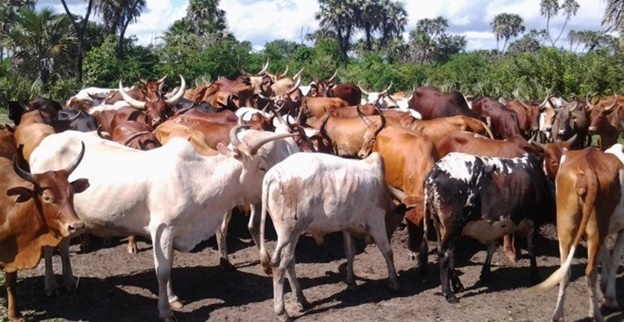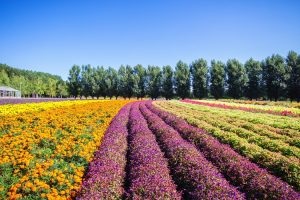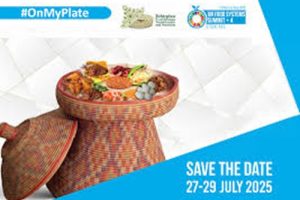
It is well recognized that animal husbandry is the branch of agriculture where animals are reared, bred, and raised for meat, fiber, eggs, milk and other food products thereby supporting the economic sector. The sub-sector helps in the proper management of animals by providing proper food, shelter, and protection against diseases to domestic animals.
Taking this into account, The Ethiopian Herald approached Ayalew Demissie, an agro-economist who graduated from Addis Ababa University and working as an agricultural expert centering livestock safety.
He said, “Animal husbandry provides employment to a large number of farmers and thereby increases their living standards. It also helps in developing high-yielding breeds of animals by crossbreeding. Besides, livestock plays an important role in the Ethiopian economy. Livestock contributed a significant share to the income of small farm households, as it has provided a livelihood to close to 85 percent of the national population, who have resided in the rural part of the country.”
As to Ayalew, animal husbandry refers to livestock raising and selective breeding. It is the management and care of animals in which the genetic qualities and behavior of animals are further developed for profit. A large number of farmers depend upon animal husbandry for their livelihood.
Animals provide people with a variety of food products which have high nutritional values. Therefore, they require a lot of care and attention. As animals are bred commercially in order to meet the high demand for food, their economic contribution in terms of income is quite valuable.
He said, “The care, breeding, management, etc., of animals are particularly monitored under the department of animal husbandry. Animal husbandry is a large-scale business. The animals are bred, cared for, reared, and sheltered in a farm or region which are specially built for them. Animal husbandry involves poultry, milk-farms, apiculture (bee agriculture), aquaculture, etc.”
According to Ayalew, dairy farming is the agricultural technique concerned with the long-term production of milk, which is then processed to obtain dairy products such as curd, cheese, yoghurt, butter, cream, etc. It involves the management of dairy animals such as cows, buffaloes, sheep, goat, etc.
“Wildlife has also a critical place in our imagination and in the environment. It is also essential to the country’s wildlife-based economy, which includes conservancy tourism. At a local level, when communities benefit from wildlife, they are encouraged to protect it, and this in turn benefits the broader national economy via generating large amounts of income and employment from tourism.”
By the time of early civilizations such as ancient Ethiopia, cattle, sheep, goats, among others, modern animal husbandry relies on production systems adapted to the type of land available, he said.
Yes, he said, most livestock are herbivores, and many farmers in Ethiopia depend on animal husbandry for their livelihood. In addition to supplying milk, meat, eggs, wool, their castings and hides, animals are the major source of power for both farmers and the entire society.
“Animal husbandry is the branch of science deals with the practice of breeding, farming and care of farm animals such as cattle, dogs, sheep and horses by humans for advantages, and farm animals contribute not only a source of high-quality food that improves nutritional status but also additional resources such as manure for fertilizer, on-farm power, and other by-products, and, in addition, provide economic diversification and risk distribution,” he opined.
As to him, it is well recognized that the subsector in particular and the agriculture sector in general provides a livelihood for more people than any other industry. Growth in agricultural production and productivity is needed to raise rural incomes, to support the increasing numbers dependent on the industry and to meet the food and raw material needs of the faster growing urban populations.
True, he said, enhancing agricultural productivity contributes to industrial growth by providing cheap labor, capital investment, foreign exchange and markets for manufactured consumer goods. Agriculture has a key role in reducing poverty since most of the nation’s poor live in rural areas and are largely dependent on agriculture, while food prices determine the cost-of-living for the urban poor.
Livestock provide a great share of the Gross Domestic Product (GDP) of the country and the rapid growth in demand for livestock products in the country. True, livestock also contribute to rural livelihoods, employment and poverty relief. They integrate with and complement crop-production, embody savings and provide a reserve against risks. Some livestock have special roles in traditional culture.
“Livestock are capital assets, produced in the past and contributing to future product output. Investment in, or the acquisition of, livestock involves saving or borrowing, justified by the expected future return on capital. Apart from durable capital embodied in the animals, circulating capital is needed to meet current costs of production. Investment in livestock raises farm production through the extension of the area of land area that can be utilized, diversification of the productive activity on a crop farm and intensification, i.e. by raising livestock value of output and hence total production per hectare of agricultural land increases.”
According to Ayalew, mixed crop-livestock production systems are important as the source of the bulk of ruminant livestock production and the home of the majority of the world’s poor. Complementary relationships exist with livestock, fed on crop by-products and other plant material, contributing draught power, manure, additional sources of food and income, savings and buffer against risk.
“Poultry production is also a key enterprise in Ethiopia, the change from pastoralism to cropping is seen as a land-saving technology, or the substitution of labor for land. The move to mixed farming is capital using and land-saving; capital is substituted for land. The need for increased livestock production is pressing, given the rapidly growing demand for animal products and the important contribution of livestock to the incomes and welfare of the rural poor,” he opined.
As to Ayalew, additional physical or financial capital is needed for the introduction of a new livestock enterprise, but thereafter replacements may be home bred. Human capital in the form of husbandry knowledge and skills is also needed. Technological innovations should also be appropriate to the resource base, while access is needed to market outlets and input delivery systems.
“Livestock development policies include trade and pricing policies, to encourage the developed countries to reduce trade barriers, to reduce domestic protection of industrial sectors and to make limited use of subsidies and taxes,” he added.
As to Ayalew, the introduction of new technology must be accompanied by the development or strengthening of the institutional framework needed for its implementation. The other key area, where institutional change is essential for the success of livestock development projects and programs, is that of marketing, including transport, processing and selling. As there are economies of scale in these marketing activities, large commercial operations are most likely to be cost-effective.
Local breed improvement is a long-slow process and increases in production are generally more readily achieved by cross-breeding with, or adopting, exotic breeds. Equally important is the need for socio-economic research into the institutional framework for the allocation of natural resources, credit, and labor hire, the delivery of inputs and the processing and marketing of livestock products.
“The sector can be an engine for economic growth. For livestock keepers in low- and middle-income countries, livestock provides many other benefits, including income generation, draught power, transport, manure to enhance soil nutrients, social security, and insurance in times of need,” he added.
Obviously, he added, the livestock sector is one of the fastest-growing economic sectors in middle-income countries like ours. Demand for animal-source foods is growing rapidly, fueled by population growth, urbanization, and rising incomes, indeed! This offers huge opportunities for the livestock sector and people who keep animals, but also poses some challenges that cannot be ignored.
With technology, investment, and the right policies, livestock can contribute fully to food security and nutrition, health and economic development while at the same time respecting planetary boundaries and contributing positively to the environment and social and gender equality.
He said, “Currently, the subsector is experiencing economic growth. For livestock keepers in the country, livestock provides many other benefits, including income generation, draught power, transport, manure to enhance soil nutrients, social security, and insurance in times of need. Besides, livestock can also provide business and employment opportunities, not just in production, but all along the value chains especially for young people and women. Indeed these opportunities can be transformational for women’s lives.”
BY MENGESHA AMARE
THE ETHIOPIAN HERALD SUNDAY EDITION 29 DECEMBER 2024





